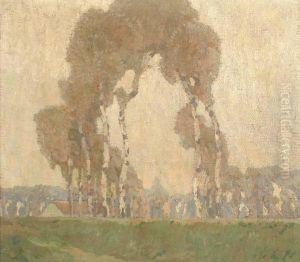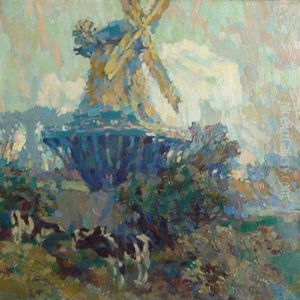Franz Brantzky Paintings
Franz Brantzky was a German architect, designer, and artist associated with the Jugendstil movement, which is the German counterpart of Art Nouveau. Born on December 8, 1872, in Cologne, Germany, Brantzky was part of a cultural movement that sought to create a new style free of the historical imitations that dominated 19th-century art and design. This movement was characterized by organic, especially floral and other plant-inspired motifs, as well as highly stylized, flowing curvilinear forms.
Brantzky received his education in architecture at the Technical University of Munich and further honed his skills in various architectural offices. His work is noted for its versatility, encompassing a range of mediums and disciplines, including furniture design, interior design, and urban planning. He was also involved in exhibition design, which was an important aspect of the Jugendstil movement, as it provided a platform for artists and designers to showcase their innovative ideas in a period of rapid modernization.
During his career, Brantzky was active in the architectural scene of Cologne, contributing to the city's urban landscape. However, despite the initial flourishing of Jugendstil, the movement began to wane in the early 20th century as it faced criticism for its ornamental excesses and was eventually overshadowed by the rise of modernism. The preference for more functional and less ornamental designs marked a shift in the architectural and artistic communities, leading to the decline of the Jugendstil style.
Brantzky's career, like many of his contemporaries, was affected by the changing tastes and the political upheavals of the early 20th century, including World War I and later World War II. He passed away on November 24, 1945, in Rodenkirchen, which is now part of Cologne. While he may not be as widely recognized as some of the leading figures of the Jugendstil movement, Brantzky's contributions to the field of architecture and design during this transformative period in European art history are nonetheless valued by scholars and enthusiasts of the period.

